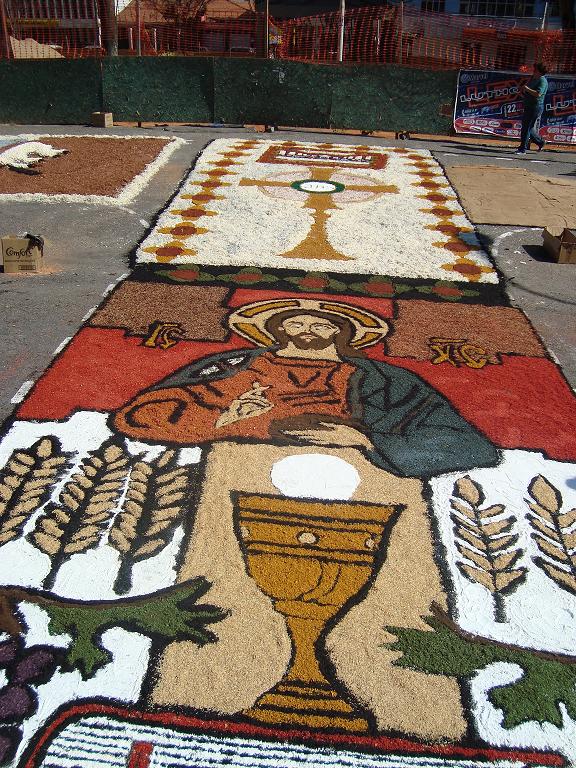Solemnity of Corpus Christi originated with a Eucharistic miracle in 1263

The fight against the Catholic faith has gone through countless battles through the centuries and God has never abandoned his church, always reinvigorating the faith of his children. In 1263, in Italy, there was a front of opponents called The Taros, who denied God's presence in the Eucharist. These constant attacks on the Christian faith drowned out many, including even priests.
This was the case of Father Pedro da Bohemia in Germany. He came to have deep doubt about the real presence of Jesus Christ in the Holy Eucharist through His flesh and blood after the transubstantiation performed during Mass. Troubled by this denial that came to his head, he decided to make a pilgrimage to the tomb of St. Peter in Rome to ask for the strengthening of his faith. After the pilgrimage, he began his way back. On the way he stopped to celebrate Mass in the city of Bolsena, Italy, under the altar of St. Cristina, when the miracle occurred before his eyes:
As soon as he made the consecration, he noticed that he began to drunh blood from the Host, and then received the grace he had asked to renew his faith. The blood reached the body and liturgical linens.
However, the priest was embarrassed by his previous lack of faith and now exposed to the miracle, tries to hide from the other gifts the miracle, running to the back with the Eucharist and stained linens. But he can't get out of it, as several likes of blood could still be seen dripping on the ground along the way, forcing him to reveal the truth.
Finally and wisely, Father Peter decided to go to Ovietto, a nearby city where Pope Urban IV lived, to show him the miraculous divine event. The pope, in understanding what happened, asks his bishop Giácomo to make sure of the veracity of the facts, as well as to lead to him the evidence coming from the body with the blood of Christ.
The bishop then takes the body to the Pope in the city of Ovietto. When he comes across the bloody linen, he kneels down and says, Corpus Christi!!! He then shows it to the population that was present at the site and places it on display in a procession led by the pope, followed by a vastness of the faithful. It was the first procession of Corpus Christi!
The following year, in 1264, the Pope became aware of a request from Jesus to St Julian of Conillon for His desire for a liturgical feast for the worship of the Holy Eucharist. God revealed this desire to the saint twenty years ago, when she was only 16, but she kept it a secret until she found the right time for her revelation:
As a teenager, St. Juliana saw the moon in its splendor and brightness, but cut by a dark band of diametricshape. Then there was discernment that the moon represented the Church on earth, and the strip darkened the absence of a liturgical feast to increase faith in the Eucharist.
Juliana and her sisters in the convent who had strong adoration of the Eucharist convinced the local bishop to hold the feast locally in the parish of Sainte Martin. Other bishops also followed him by instituting the feast, until it spread throughout Belgium.
Finally, in August 1264, the Pope proclaims the bull "Transiturus of the world", prescribing the institution of the feast in honor of the Body and Blood of Christ in the Eucharist, that is, the Solemnity of Corpus Christi, which is a clear answer of divine providence to those who so denied the presence of the living God in the Eucharist. Today the feast is celebrated on the Thursday after the octave of Pentecost.
References:
TVCNROMA. Vídeo Milagre Eucarístico
CANÇÃO NOVA. Formação: Conheça a história da Festa de Corpus Christi
REVISTA DE NOSSA SENHORA. Milagre Eucarístico de Orvietto / Bolsena – Itália 1263
REDE SÉCULO 21. Santa Juliana de Cornillon: a freira que ajudou a instituir Corpus Christi
JESUS MISERICORDIOSO. Milagre Eucaristico de Orvieto - Bolsena Itália - ano de 1263